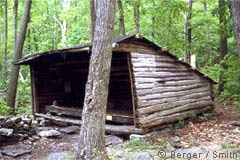Ever wonder who makes and maintains the hundreds of thousands of miles of hiking trails that criss-cross America’s backcountry? Without volunteers, hikers on America’s trails would have far fewer miles to trek, or would spend all their time bashing through blowdowns, trudging through nettles and poison ivy, and slogging through bogs and mud puddles. Volunteer vacations offer a chance to get outdoors, work on a worthwhile project, and meet like-minded people. And in a difficult economy, they also offer an affordable outdoor experience.
Where to Find Volunteer Work Trips and Vacations for Hikers
National Forests, National Parks, BLM, state and county lands, and, especially, wilderness areas (where laws dictate that all trail work be done with hand tools) use volunteers to do a variety of jobs. Long-distance hiking trails are largely maintained by volunteers, who spend thousands of hours doing everything from putting together newsletters to building bridges to clearing brush.
Major trail organizations such as the Appalachian Trail Conservancy, the Pacific Crest Trail Association, and the Continental Divide Trail Coalition have well-organized trail maintenance programs. Members of the Appalachian Long Distance Hikers Association support regular maintenance projects, as do members of the Appalachian Mountain Club and the Colorado Trail Society. To find a complete list, check out the American Hiking Society, which offers what may be the best vacation deal around: For a registration fee of about $260 (which usually covers meals), you get to join a work trip, usually about five or six days long. the trips take place all over the country. The Student Conservation Association also runs volunteer maintenance trips for teens.
How to Choose a Volunteer Trail Vacation
Some trail maintenance jobs require specialized skills in carpentry or construction, but many trips offer the opportunity to learn on the job. There are also jobs just about anyone can do, like hauling supplies and clipping vegetation.
Consider the difficulty of a trip. Cutting trail at 12,000 feet in the Rocky Mountains five miles from the nearest trailhead requires that volunteers be fit enough to hike those miles at that altitude — and then work. Don’t lie to yourself or to the sponsoring organization about your fitness…. you’ll have only yourself to blame if you can’t handle the demands.
Types of Volunteer Jobs on Hiking Trails
- Trail construction. This can include building and maintaining lean-tos, bridges, and information kiosks, installing trail signs, and building water bars and stone steps.
- Trail clearing. Anyone can clear trail. Trimming shrubbery, removing deadfall from ice storms, and cutting overhanging branches are jobs that don’t require specialized skills, but provide a crucial service in keeping trails open.
- Maintaining a trail shelter. Hike in to a shelter, then sweep it out, pack out litter, clean out the fire ring, and make minor repairs.
- Packing supplies in. On western trails, packhorses can be used to haul heavy supplies. Many trail organizations welcome inquiries from horse and mule owners willing to assist with this job.
- Cooking for a trail crew. Hikers who like to entertain will get enormous satisfaction from cooking for a crew that’s spent an entire day building a trail — and building up an appetite.
Whether volunteers install rock walls, build a cabin, or paint blazes on trees, they soon learn that there is a tremendous amount of satisfaction in helping keep America’s trails open. And they take proprietary pride in the trails they have worked on.
